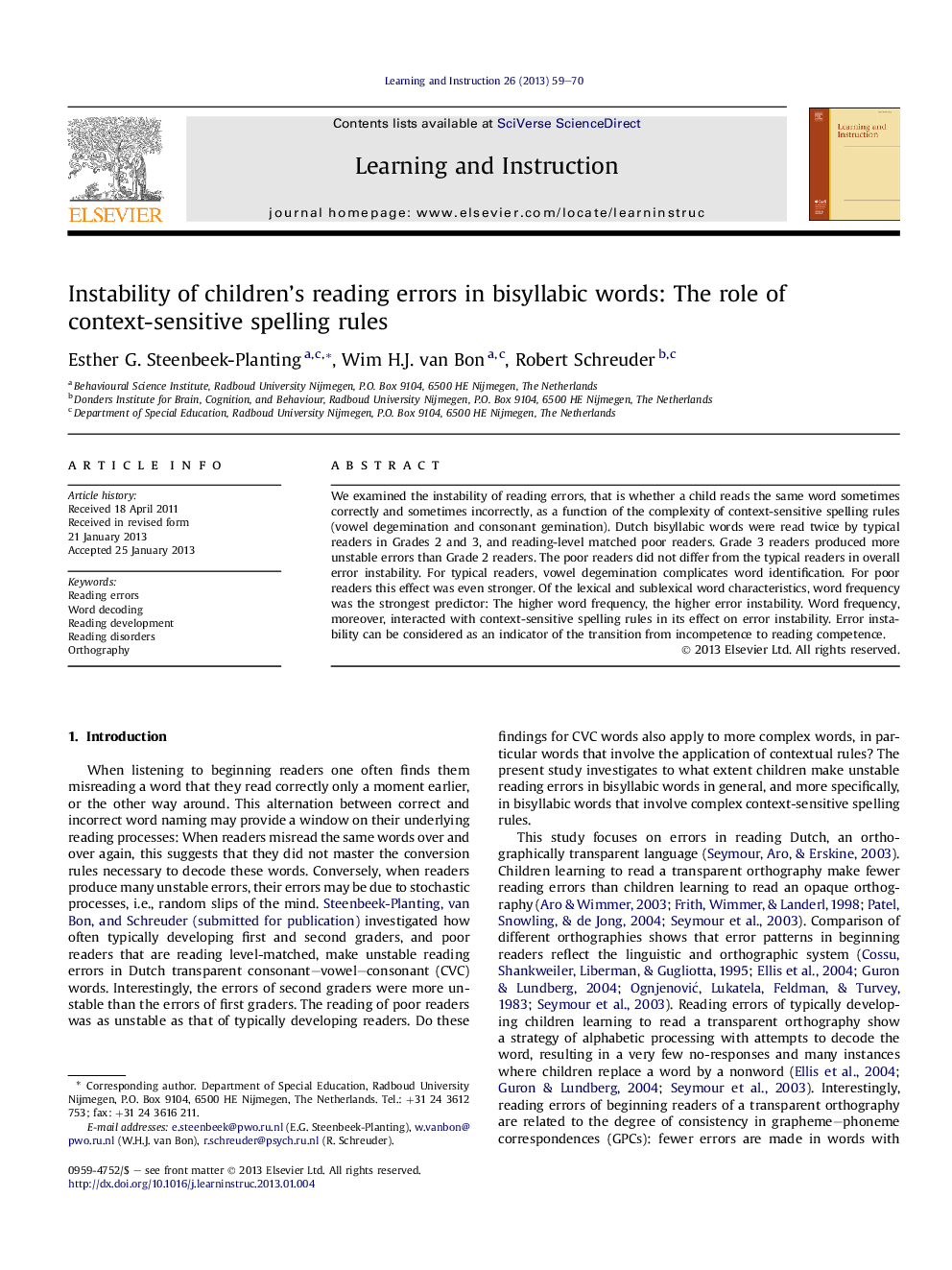| Article ID | Journal | Published Year | Pages | File Type |
|---|---|---|---|---|
| 365644 | Learning and Instruction | 2013 | 12 Pages |
We examined the instability of reading errors, that is whether a child reads the same word sometimes correctly and sometimes incorrectly, as a function of the complexity of context-sensitive spelling rules (vowel degemination and consonant gemination). Dutch bisyllabic words were read twice by typical readers in Grades 2 and 3, and reading-level matched poor readers. Grade 3 readers produced more unstable errors than Grade 2 readers. The poor readers did not differ from the typical readers in overall error instability. For typical readers, vowel degemination complicates word identification. For poor readers this effect was even stronger. Of the lexical and sublexical word characteristics, word frequency was the strongest predictor: The higher word frequency, the higher error instability. Word frequency, moreover, interacted with context-sensitive spelling rules in its effect on error instability. Error instability can be considered as an indicator of the transition from incompetence to reading competence.
► Studying error instability is more informative than studying reading accuracy alone. ► Error instability indicates the transition from reading incompetence to competence. ► It is related to the complexity of grapheme–phoneme correspondence rules. ► Poor readers do not differ from typical readers in reading bisyllabic words. ► But poor readers are disadvantaged in applying complex spelling rules.
